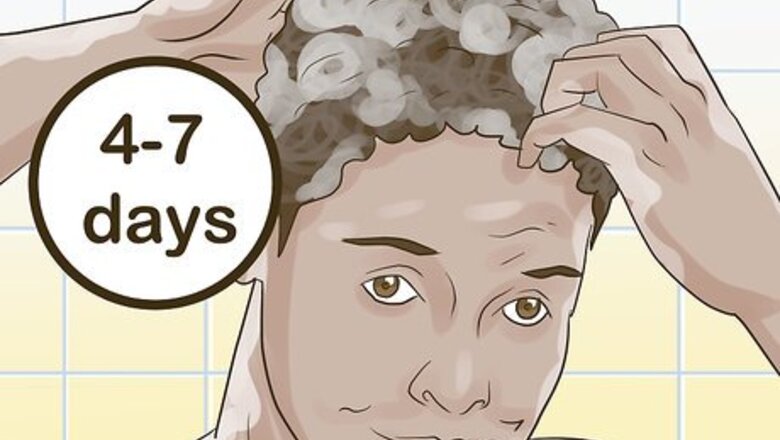
views
Washing Your Hair

Wash your hair every 4-7 days. Washing regularly helps to remove any hair product build up you might have, allowing your scalp to breathe. When you wash, you also stimulate blood flow to the scalp, which encourages hair growth. A lot of shampoos on the market contain sulfates, which can strip your hair of its natural oils. These natural oils help your hair to stay moisturized, preventing breakage. Search for sulfate-free products to keep your hair healthy and strong. Remember to deep condition when you wash. Deep conditioning can be time consuming, but it may help repair any damage from breakage.
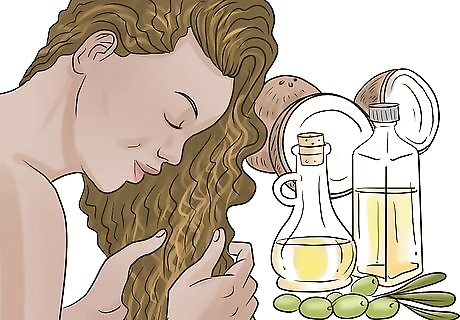
Try a pre-poo treatment. If your hair feels too dry after a regular wash, consider treating your hair with oil, or pre-pooing, before shampooing. Popular pre-poo oils are olive oil and coconut oil. Coconut oil may even help reduce protein loss during your shampooing process. Mix together 1/4 cup of olive oil, 2 tablespoons of castor oil, and 4 drops of tea tree oil and apply to damp or dry hair. Cover your hair with a shower cap and let the mixture sit for about 15 minutes before shampooing as normal. Mix together 4 tablespoons of coconut milk, 2 tablespoons of honey, and 1 tablespoon each of 3 different oils. Olive, castor, coconut, almond, and jojoba oil are all great choices. Warm the mixture in the microwave and apply it to dry, unwashed hair. Cover your hair with a shower cap and a thermal heat turban and let it sit for an hour before washing as normal.
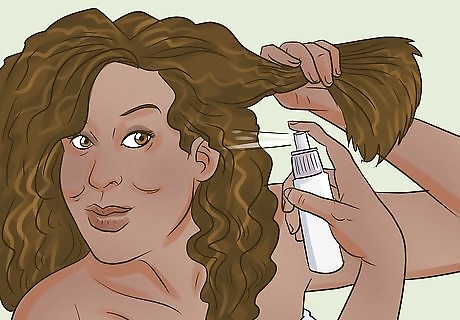
Keep your hair moisturized. You might find that your hair gets a little dried out even if you follow a good hair washing routine. If this happens, you may need to use a moisturizer or sealant between washes. Water is the best moisturizer for dry hair. Some days you may be able to get by with just spraying a little water on your hair to keep it soft. If you do have to buy a moisturizer, search for products that have water listed as the first or second ingredient. Sealants help keep the moisture in your hair, and are often made with oils and butters. You should only apply sealants after you moisturize, otherwise you'll just have greasy hair. If you find a product that contains both water and oil, it may work as a moisturizer and a sealant. If your hair is especially kinky or dry, search for thicker, creamier moisturizers.
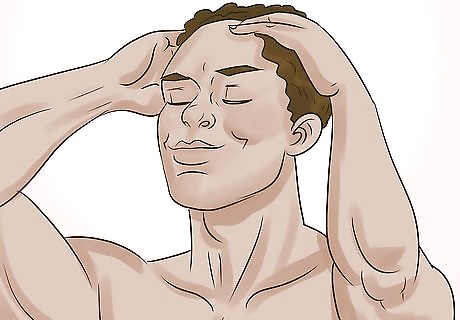
Take care of your scalp. Massaging your scalp for 20-30 minutes a day may help encourage hair growth. If you have any damage or thinned hair from hair relaxers or weaves, this can be especially helpful.
Styling Your Hair
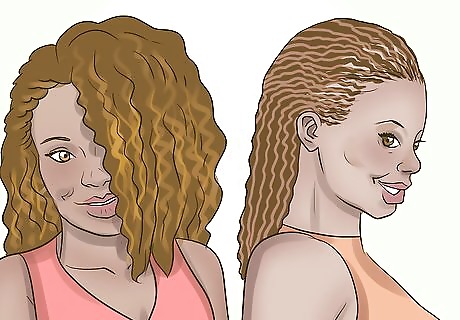
Use protective or low manipulation styles. Protective and low manipulation styles are good ways to prevent breakage and retain length. Protective styles are styles that protect the ends of your hair by tucking them away. Cornrows, and two-strand twists, are common examples of protective styles. Weaves and extensions are technically protective styles, but can still damage your hair. Some protective styles, such as a two-strand twist, allow you to further style your hair with a bun, or a twist-out. Braiding cornrows can be a time consuming task and takes a bit of practice to master. Have a friend help you if you plan on going this route. Low manipulation styles don't protect the ends of the hair, but they can still prevent breakage. They are easier to do and less permanent than protective styles. Twist-outs and coils are examples of low manipulation styles.

Detangle when your hair is damp. After washing, make sure you give your hair a little time to dry before trying to detangle it. If your hair is dry, use a spray bottle and mist it with some water before detangling. Use a wide-tooth comb to detangle your hair. If you find that using a comb causes your hair to break, then switch to finger-combing. Some people prefer to use a little conditioner or shea butter to help detangle their hair. Once your hair is detangled, rinse the moisturizer out with water.
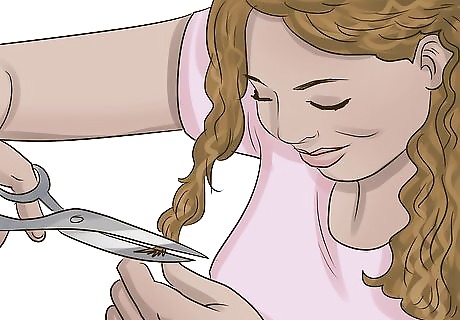
Trim your ends. When trying to grow your hair, it's best to trim away any split ends to prevent further damage to your hair. Schedule your trims every 3-4 months, when the hair starts naturally splitting. In between trims use a sealant to protect the ends of your hair. Trimming your hair when it is dry will give you a better idea of your hair's actual length. Dry hair also allows you to see more split ends and the true shape of your hair. Trimming your hair when it is wet might be easier because your hair is more flexible. But, during a wet trim you can't see the actual shape of your hair.
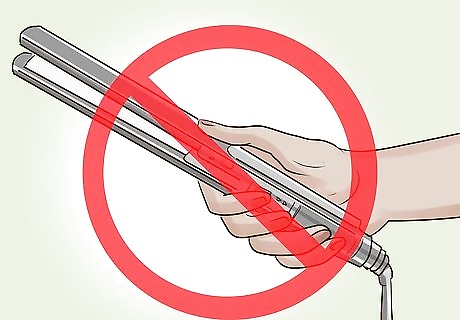
Avoid using high heat to style your hair. Heat tools, such as flat irons and hot combs, can permanently damage your hair if used too much. These tools suck the moisture from your hair and increase the chances of breakage. Too much heat may lead to more frequent trims, which means a longer growing process. Try braiding or twisting your hair to naturally increase the length.
Getting the Right Nutrients
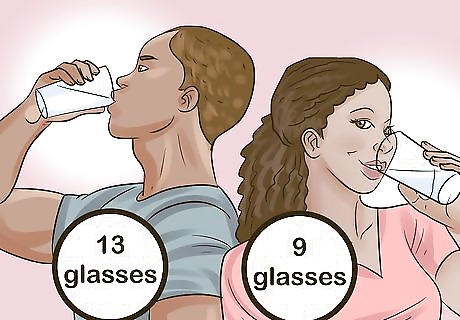
Drink lots of water. Water is essential for good health, especially if you're trying to improve hair growth. The cause of poor hair growth is often due to poor nutrition and the best thing you can do is get more water in your diet. The recommended daily amount is 9 glasses of water for women, and 13 glasses for men.
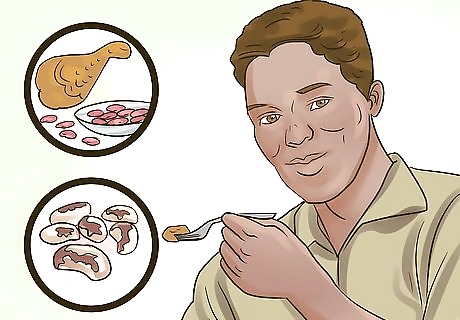
Get enough protein. Without enough protein in your diet, your hair can become brittle, or even lose color. Many sources of protein contain other nutrients necessary for healthy hair and skin. Poultry is a good source of protein and iron. Beans are also a good source of protein and iron, as well as zinc and biotin. Incorporating nuts into your diet will also give you a good protein boost. Some nuts, such as Brazil nuts, contain selenium, which promotes scalp health.
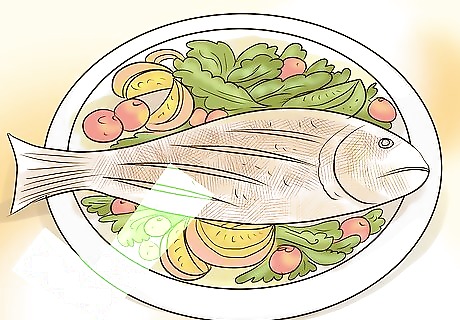
Eat more fish. Fish is a good source of protein, but it is also an excellent way to get Omega-3 fatty acids into your diet. Omega-3s are necessary to keep your hair naturally moisturized. A lack of these fatty acids in your diet can contribute to a dry scalp and dull hair. Substitute a couple of tablespoons of flaxseed into your diet to get your Omega-3s if you're a vegetarian.
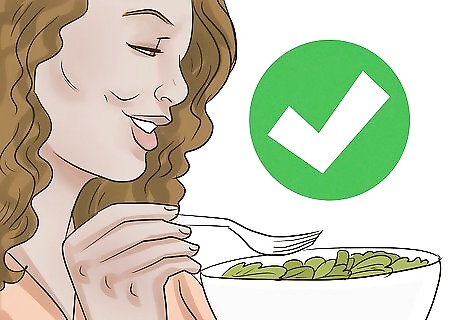
Eat your greens. Greens are a good source of vitamins A and C, calcium and iron. Vitamins A and C help your body produce sebum, an oily substance that acts as a natural conditioner, and keeps your hair follicles healthy. Broccoli, spinach, kale, and chard are just a few examples of some greens to add to your diet for healthy hair. Carrots are also an excellent source of vitamin A, though they aren't technically a green.










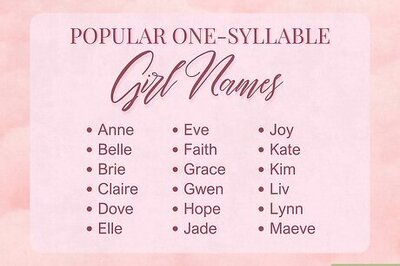









Comments
0 comment